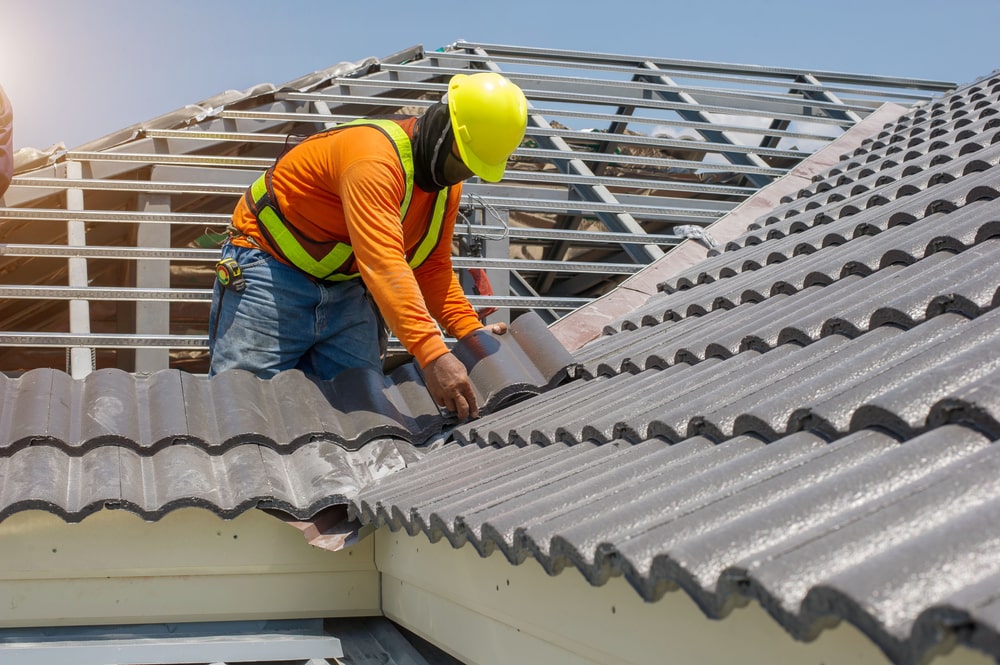Comparing Costs Amongst Roofing Companies in Gainesville Florida
Comparing Costs Amongst Roofing Companies in Gainesville Florida
Blog Article
Best Practices for Ensuring Proper Roof Ventilation
A well balanced intake and exhaust air vent ratio, commonly 1:300, plays a crucial duty, with intake vents preferably put at the lower edge of the roof covering for trendy air entry and exhaust vents at the top for warm air exit. Keeping insulation away from vents is essential to stop airflow restriction.
Understand Ventilation Fundamentals
Effectively recognizing ventilation essentials is necessary for making certain the durability and effectiveness of roof. Reliable ventilation minimizes wetness accumulation and temperature level extremes in the attic room, both of which can cause significant architectural damages in time. A well-ventilated roof covering helps in avoiding typical concerns such as mold development, timber rot, and ice dams, which can jeopardize the stability of the roof covering materials and the underlying structures.
The key objective of air flow is to promote the motion of air, permitting a constant exchange in between the outdoor and indoor environments. This balance is attained via a mix of intake and exhaust vents that function with each other to maintain optimal air flow. Consumption vents, generally located along the soffits or eaves, enable fresh air to go into the attic room, while exhaust vents, typically situated at or near the roofing ridge, enable warm, moist air to get away.
Trick factors affecting the effectiveness of roof ventilation consist of proper positioning, adequate sizing, and guaranteeing that both consumption and exhaust vents are unblocked. Normal examination and maintenance are crucial to recognize possible blockages, damage, or ineffectiveness in the ventilation system, thus safeguarding the roofing's performance and durability.
Kinds of Roofing System Vents
Roofing vents play an essential duty in preserving efficient attic ventilation and, by extension, the general wellness of the roof. Various sorts of roofing vents are available, each with special benefits customized to certain roof covering needs. Ridge vents, for instance, are installed along the roof's height, enabling cozy, moist air to run away from the attic room. They supply continuous air flow and mix effortlessly with the roofline, making them both effective and visually pleasing.

Soffit vents are installed under the eaves and job in tandem with roof vents to ensure a well balanced intake and exhaust system. By enabling cooler air to enter from below, soffit vents help with the expulsion of hot air with top vents. Gable vents, located on the outside wall surfaces of the attic, deal another efficient option, specifically in homes with saddleback roofs.
Examine Your Existing Ventilation

Following, consider the age and problem of your roof materials and ventilation elements. Older systems might not abide by present building ordinance or might have weakened with time, reducing their performance. Conduct a comprehensive evaluation to recognize any kind of indications of damage, such as corrosion, damages, or gaps that can jeopardize the system's efficiency.
Furthermore, gauge the attic temperature level and humidity levels. High temperature levels and moisture can suggest inadequate air flow.
Setup Best Practices
Efficient installation of roofing air flow systems is extremely important for guaranteeing optimal performance and long life. Correct installation starts with recognizing the specific ventilation requirements of the roof covering and the structure it covers. This involves computing the right proportion of consumption to wear down vents, generally adhering to the 1:300 guideline, which stipulates one square foot of air flow for every single 300 square feet of attic room floor room.

Intake vents must be installed at the roof's lower side, frequently in the soffits, to permit awesome air to go into. Exhaust vents, on the various other hand, need to be mounted near or at the roofing's top to facilitate the leave of warm, damp air.
Seal all vent links thoroughly to stop air leakages and view it now potential water seepage. Use high-grade materials and adhere to maker standards to make sure durability and performance. Additionally, integrating ridge vents with baffles can substantially improve air flow performance by preventing wind-driven rainfall and snow from going into the attic room.
Ultimately, precise installation of roof ventilation systems reduces possible problems such as mold development, ice dams, and structural damage, ensuring the roofing's honesty and the structure's general health.
Routine Upkeep Tips
Consistency in maintenance practices is essential to making certain the long-term efficiency of roofing air flow systems. Normal inspections are critical, preferably performed biannually-- in the spring and fall. During these inspections, make sure that vents are devoid of debris, nests, and other blockages that might hinder air movement. Check for any signs of wetness build-up or mold, as these can show improper ventilation or leaks (roofing companies in gainesville florida).
Use a soft brush or a vacuum to eliminate dirt and debris from intake and exhaust vents. Be cautious not to damage the vent screens or louvers during the process.
Proper insulation is equally vital. Ensure that attic insulation does not obstruct the vents, as this can drastically restrict air flow. Rearrange or replace it to maintain an effective obstacle. if any type of insulation has changed or worked out.
Finally, change any type of harmed or missing parts immediately. Damaged vents, cracked tiles, or worn-out flashing can all add to poor air flow and should be resolved immediately. Regular maintenance makes certain that the roofing air flow system operates optimally, thus expanding the life expectancy of the roofing system itself.
Verdict
Guaranteeing proper roof covering ventilation is critical for keeping the effectiveness and resilience of a roofing system. Adherence to the 1:300 consumption and exhaust air vent proportion, coupled with the calculated placement of vents, is important.
A balanced consumption and exhaust vent ratio, frequently 1:300, plays an essential role, with intake vents preferably positioned at the lower side of the roofing system for trendy air entry and exhaust vents at the optimal for cozy air leave. Consumption vents, normally situated along the eaves or soffits, permit fresh air to enter the attic room room, while exhaust vents, frequently positioned at or near the roof covering ridge, enable hot, damp air to escape.
Soffit vents are installed under the eaves and job in Resources tandem with roofing vents to guarantee a balanced intake and exhaust system. By allowing cooler air to enter from below, soffit vents help with the expulsion of warm air via upper vents. Adherence to the 1:300 consumption and exhaust vent ratio, combined with the critical positioning of vents, is crucial.
Report this page